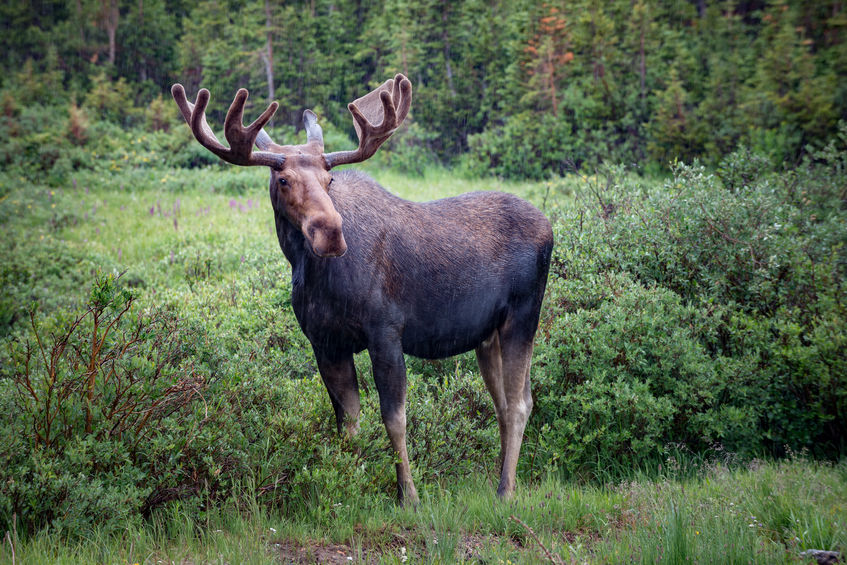
As the largest member of the deer family, moose are breathtaking creatures to come across in the wild. They’re best known for their incredible antlers, which can grow as large as six feet in length and weigh up to forty pounds.
If you really want to get to know this beautiful animal, you should start by learning about their most distinguishing feature.
Here’s everything you need to know about moose antlers!
Bull Moose Shed Their Antlers Annually
The growth of an antler is a unique experience in the animal kingdom. Bull moose lose their antlers every winter and grow a brand-new set the following spring. These fresh antlers are covered in velvet while they grow, delivering the blood they need to develop. At the start of mating season, they begin to shed this velvet layer, leaving them with shiny new antlers to intimidate and take down their competition.
Antlers Are Mostly Just for Show
Antlers mainly serve as a display of a bull moose’s stature and strength during the fall mating season. Usually, younger and weaker males can be easily scared and fended off by a rival with a bigger rack, so there’s often no need to use them as a weapon.
In some situations, two bull moose with similar-sized racks will face off against each other, locking their antlers together to fight for a female. Damaged antlers take many seasons to recover, growing back gradually each year.
Moose Antlers Go through a Life Cycle of Growth
As a bull moose ages, its antlers will grow in size. They’ll become larger and fuller until they reach their prime—usually around age five. A moose’s antlers start with only two or three points and small palms when they are a yearling. The number of points and the size of the palms will grow each season until the antlers form a protective arch over the face during the prime years, preventing damage to a moose’s eyes when competing for mates.
As a bull moose continues to age, antler development begins to reverse. The number of points and paddle size will regress more and more each season. Misshapen antlers are often found in moose over the age of 12, signalling their old age and lower reproductive status to females and potential opponents.
Hunters Score the Antlers of the Moose They Take
The Boone and Crockett Club, a conservation group started in 1887, maintains North American big game records. Competitions for outstanding trophies are held every three years, and moose antlers are scored on a variety of features, including:
- Greatest spread
- Number of normal & abnormal points
- Palm length & width
- Beam circumference
For hunters interested in tracking down an incredible pair of antlers to score for yourself, head over to Lawrence Bay Lodge this fall for our premier moose hunting in Saskatchewan! With our large hunting areas and experienced guides, your chances of taking a bull moose are higher than ever.
Call us at (701)262-4560 to reserve your spot among our moose hunters when the new season starts!

